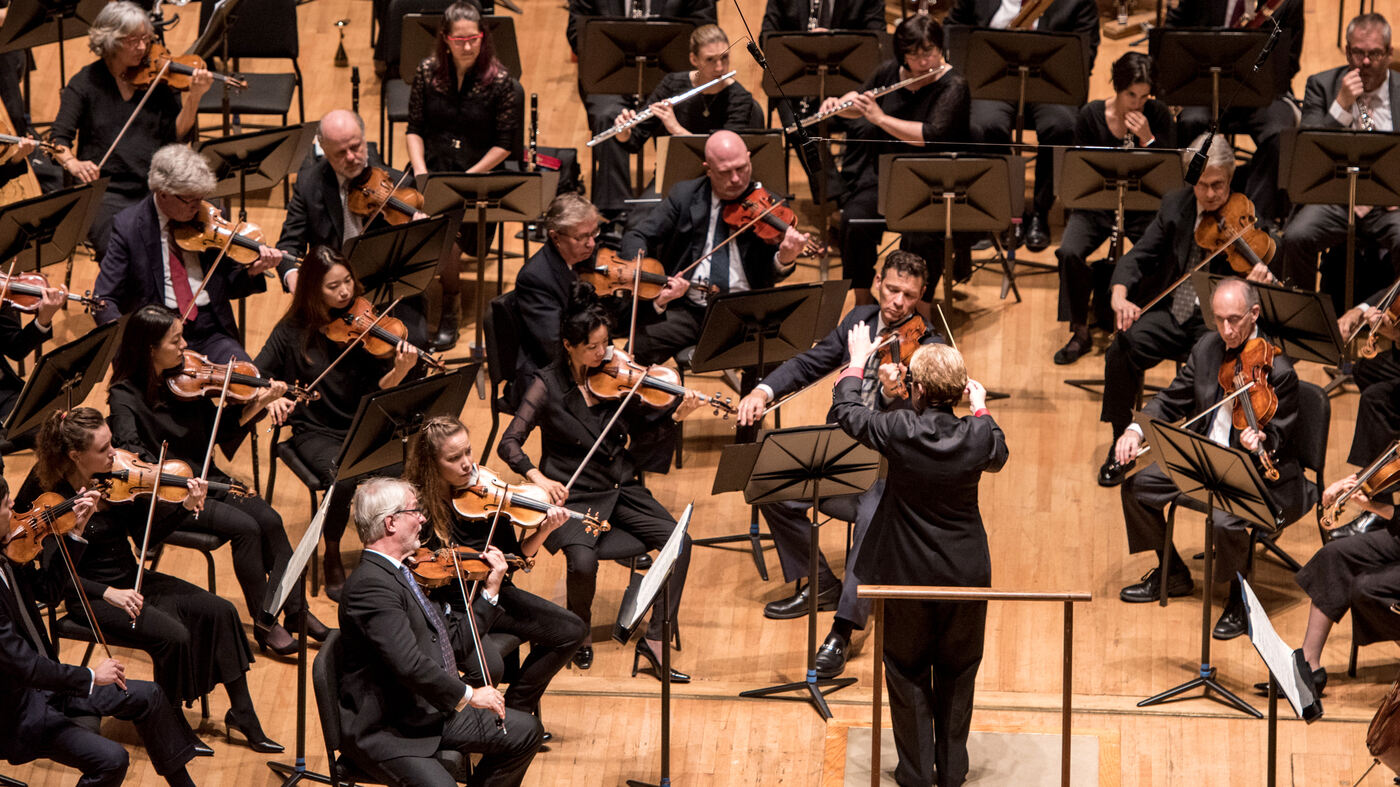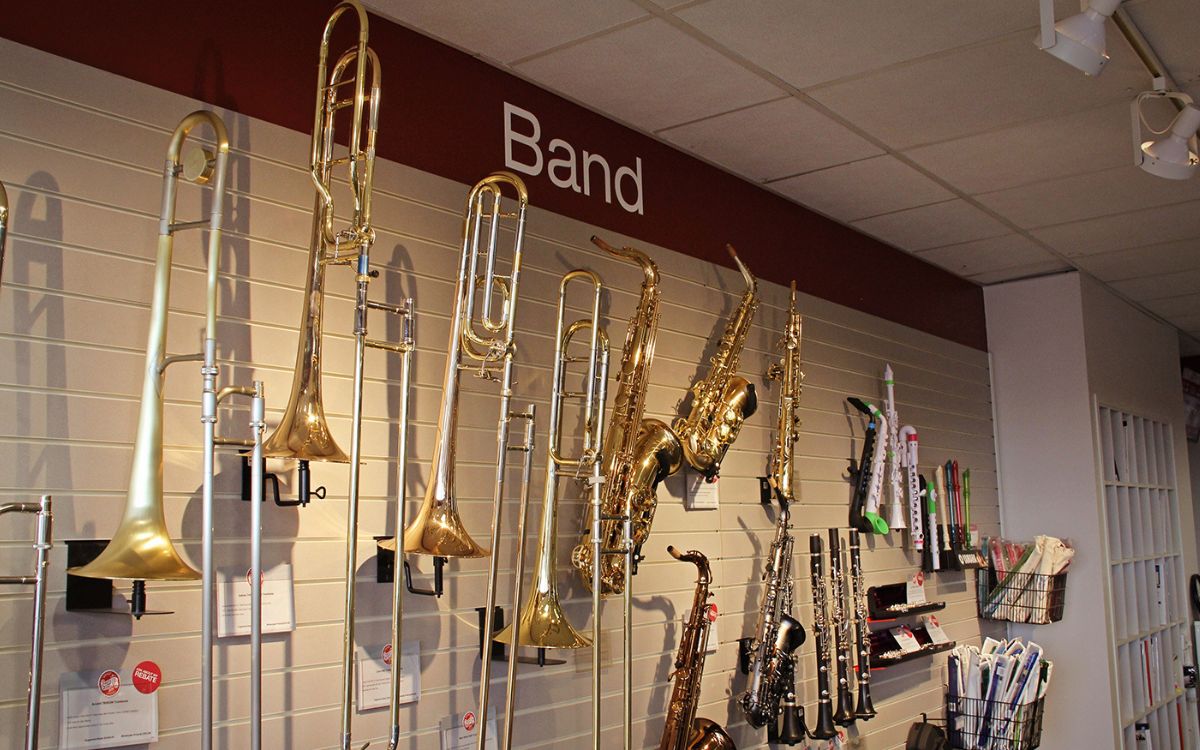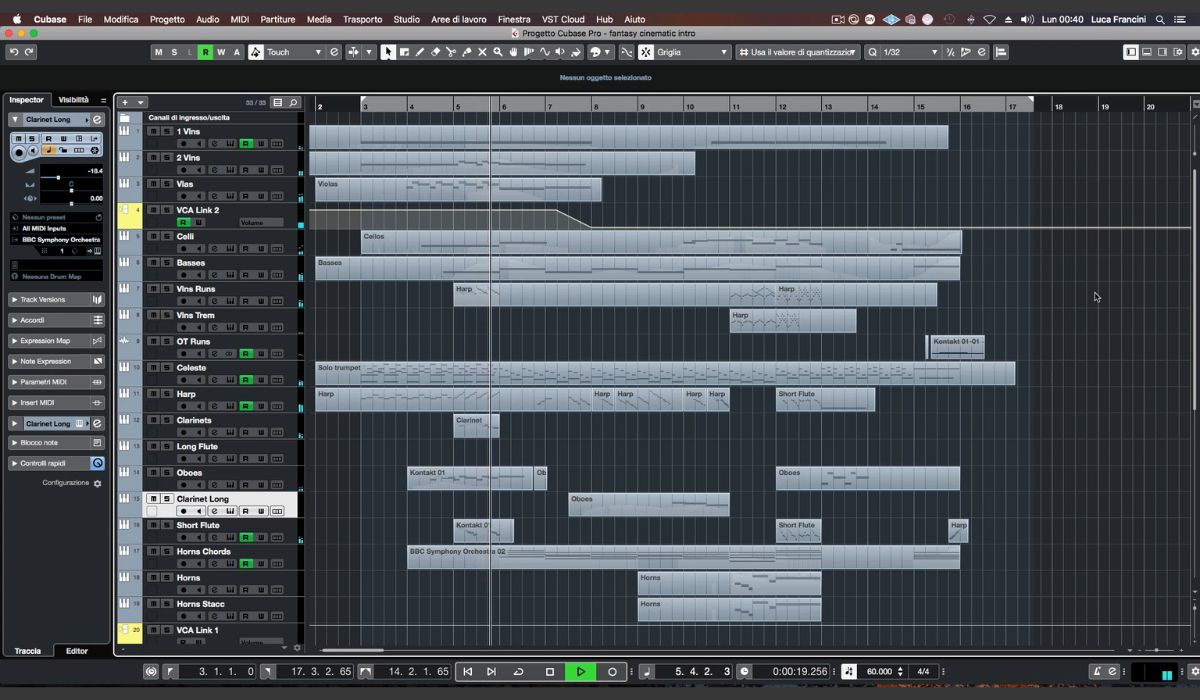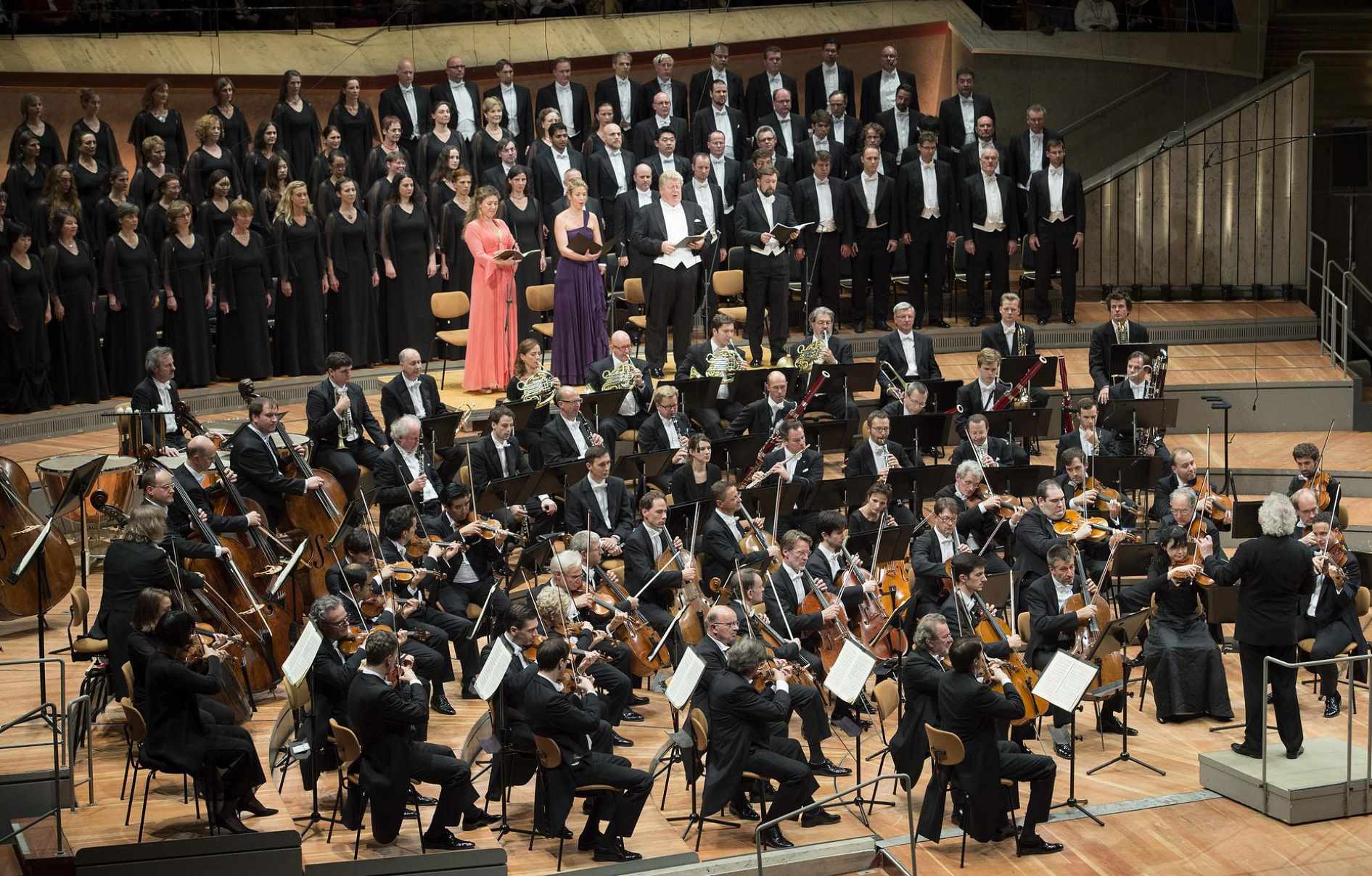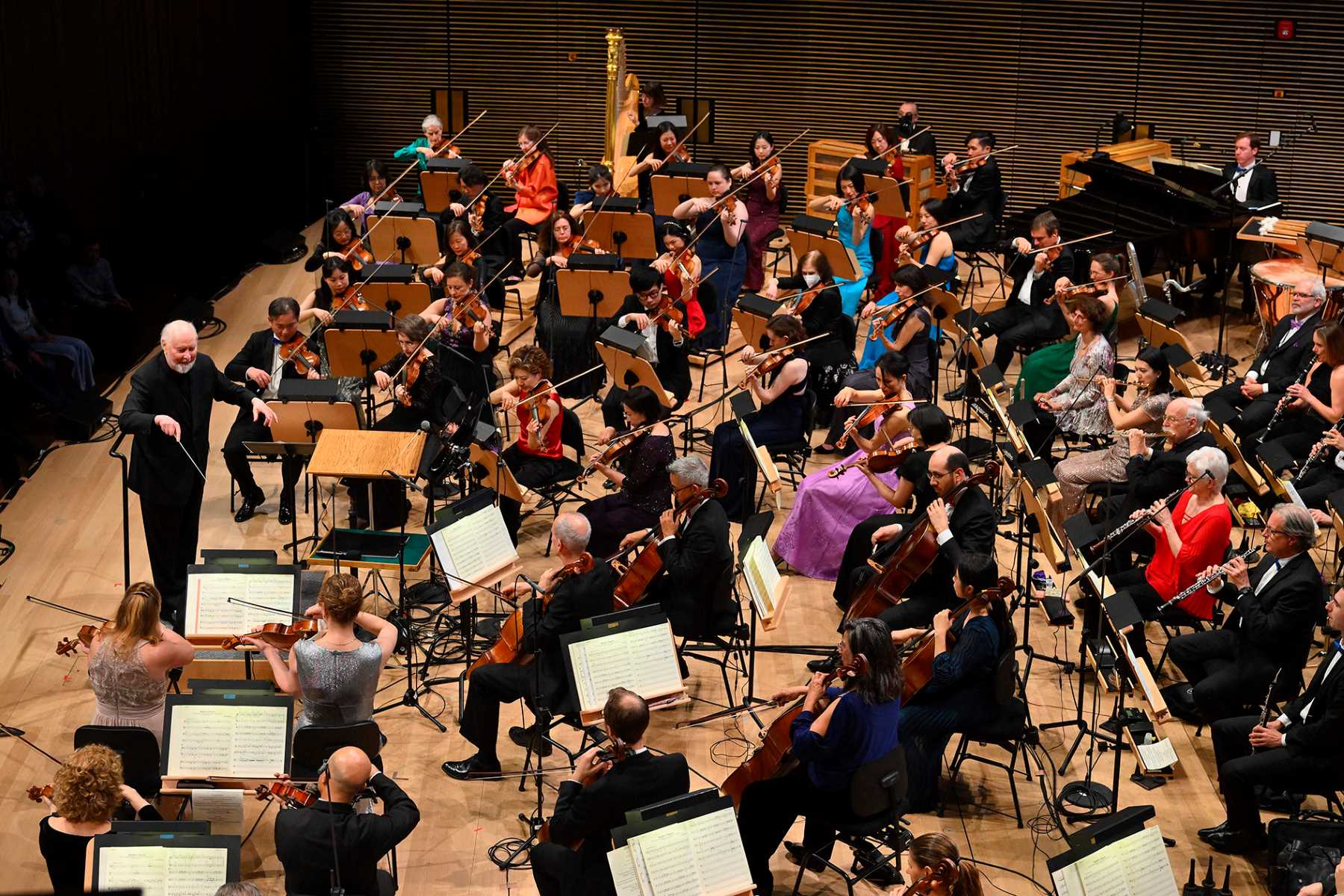Home>Genres>Symphony>Which Woodwinds Would You Usually Find In A Symphony Orchestra
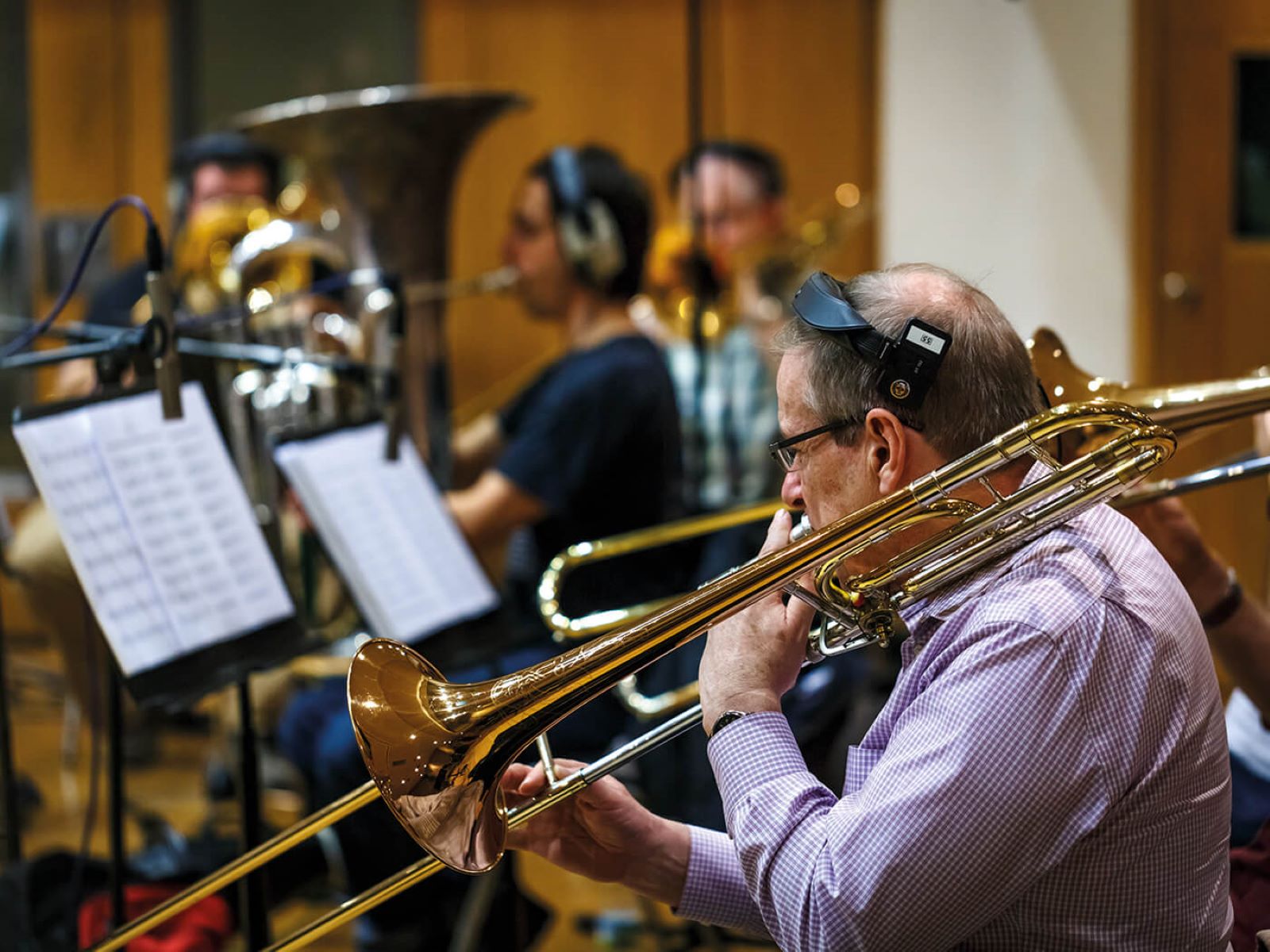

Symphony
Which Woodwinds Would You Usually Find In A Symphony Orchestra
Modified: February 24, 2024
Discover the essential woodwind instruments commonly found in a symphony orchestra, including the flute, oboe, clarinet, and bassoon. Immerse yourself in the harmonious melodies of a symphony today!
(Many of the links in this article redirect to a specific reviewed product. Your purchase of these products through affiliate links helps to generate commission for AudioLover.com, at no extra cost. Learn more)
Introduction
A symphony orchestra is a grand ensemble of various musical instruments coming together to create magical and harmonious compositions. Within the orchestra, the woodwind section plays an essential role in producing beautiful melodies, adding depth to the overall sound. Woodwind instruments are so named because their sound is created by the vibration of air in a tube made of wood or metal.
In this article, we will explore the woodwind instruments commonly found in a symphony orchestra. Each instrument has its own unique characteristics and contributes a distinct voice to the orchestra’s ensemble. Let’s dive into the world of woodwinds and discover the enchanting sounds they bring to classical music.
From high-pitched melodies to sonorous basslines, the woodwind section provides a wide range of tonal colors and expressive possibilities. The instruments can be categorized into two main families: the Flute family and the Reed family.
The Flute family consists of the flute, piccolo, and the rare alto flute. These instruments are made of metal and feature a cylindrical tube. They produce sound when the player blows across the mouthpiece and manipulates the keys and finger positions to create different pitches. The flute, known for its bright and agile sound, often takes the lead in melodic passages.
The Reed family includes instruments such as the clarinet, oboe, and bassoon. These instruments have a reed attached to a mouthpiece, which vibrates when air is blown through it. Clarinets come in various sizes, including the B-flat, A, and bass clarinet, each producing a unique tone. The oboe has a double reed and is known for its haunting and expressive sound. The bassoon, with its deep and rich timbre, adds a sense of depth and weight to the orchestra’s sound.
Another member of the woodwind section is the English horn, which is essentially a larger version of the oboe. It has a warm and melancholic tone, often associated with emotional and lyrical passages. The English horn adds depth and provides a smooth transition between the oboe and the lower-register instruments in the woodwind section.
Finally, we have the contrabassoon, a double-reed instrument. It is the lowest-pitched woodwind instrument and provides a strong foundation to the orchestra’s sound. The contrabassoon’s deep and resonant notes create a sense of power and richness in orchestral arrangements.
Each woodwind instrument brings its distinct character to the symphony orchestra, contributing to the overall texture and mood of the music. From the delicate and agile flute to the resonant contrabassoon, the woodwind section is an integral part of any symphonic composition. Now that we have an overview of the woodwind instruments found in a symphony orchestra, let’s explore each instrument in more detail and discover their unique qualities.
Flute
The flute, a member of the woodwind family, is a versatile and expressive instrument known for its bright and agile sound. It is made of metal and features a cylindrical tube with finger holes and keys. The player creates sound by blowing across the embouchure hole and manipulating the keys and finger positions to produce different pitches.
The flute’s sound is characterized by its clarity, brilliance, and ability to effortlessly float above the orchestra. Its high-pitched melodies can soar over other instruments, adding a sense of ethereal beauty to the music. The flute’s agile nature allows for rapid passages and intricate runs that can dazzle listeners.
Flutes are available in various sizes, with the most common being the C-flute and the piccolo. The C-flute is the standard flute and is commonly used in orchestral compositions. It has a warm and mellow tone in the lower register and a brighter, more piercing sound in the higher register.
The piccolo, a smaller version of the flute, produces an even higher sound and is known for its piercing and shrill quality. It is often used to add a touch of brilliance and sparkle to the overall sound of the orchestra.
The flute’s versatility allows it to play a wide range of musical styles, from delicate and lyrical melodies to lively and energetic passages. Its expressive capabilities make it a favored instrument for solos, where it can showcase its agility and ability to captivate the audience.
The flute also plays an important role in the orchestra’s ensemble, blending seamlessly with other woodwind instruments, strings, brass, and percussion. Its ability to intertwine with different sections of the orchestra adds depth and texture to the overall sound, creating a harmonious musical experience.
Flutists, or flautists, dedicate years of practice and study to master the intricacies of their instrument. They must develop strong breath control, precise finger technique, and a keen sense of musical interpretation to fully express the flute’s potential.
Overall, the flute is a key member of the woodwind section in a symphony orchestra. Its bright and agile sound, along with its expressive capabilities, contribute to the orchestra’s sonic palette and enhance the overall musical experience.
Clarinet
The clarinet is a versatile woodwind instrument with a distinctive and expressive voice. It is a single-reed instrument, meaning it has a mouthpiece with a single reed that vibrates when the player blows air through it. Known for its wide range and versatile sound, the clarinet is an essential member of the woodwind section in a symphony orchestra.
Clarinetists play the instrument by pressing metal keys and covering finger holes to change the pitch. The instrument’s cylindrical shape, combined with its unique mouthpiece and reed, allows for a rich and resonant sound. The clarinet’s ability to produce a smooth legato and graceful phrasing makes it a favored instrument for lyrical and melodic passages.
Clarinet sections in symphony orchestras often consist of three main types: the B-flat clarinet, the A clarinet, and the bass clarinet. The B-flat clarinet is the most commonly used clarinet and has a bright and vibrant sound that can cut through the orchestra. The A clarinet is slightly longer than the B-flat clarinet, creating a mellower and more centered tone. It is often used in orchestral music that requires a warmer and more blended sound.
The bass clarinet is a larger and lower-pitched member of the clarinet family. It has a deep and resonant sound that adds richness to the orchestra’s texture. The bass clarinet is particularly effective in providing a solid foundation in the lower register and can create haunting and mysterious timbres.
Clarinetists are highly skilled musicians who spend years honing their technique and musicality. They must master precise fingerings, tongue techniques, and embouchure control to execute challenging passages and bring out the clarinet’s full range of expression. From delicate and shimmering melodies to lively and energetic runs, clarinetists showcase the instrument’s versatility and range in their performances.
In the symphony orchestra, the clarinet finds its place in various musical sections and is often featured in solos or as part of ensembles within the woodwind or full orchestra. It can create beautiful harmonies with other woodwinds, blend seamlessly with string sections, or provide contrasting colors against brass and percussion.
From classical compositions to jazz and contemporary music, the clarinet is an instrument that transcends genres and time periods. Its expressive nature, vast range, and distinctive tone continue to captivate audiences and make the clarinet a beloved member of the symphony orchestra.
Oboe
The oboe is a woodwind instrument with a haunting and expressive sound. It is distinguishable by its distinctive double reed, which consists of two pieces of cane that vibrate against each other when the player blows air through them. The oboe’s unique tone and agile character make it a key member of the woodwind section in a symphony orchestra.
With its piercing yet lyrical sound, the oboe is often referred to as the “voice of the orchestra.” Its timbre can evoke a range of emotions, from melancholy and yearning to joy and exuberance. Oboists are known for their ability to produce long, sustained tones and execute delicate, intricate passages.
Playing the oboe requires skilled embouchure control, breath control, and precise finger technique. The instrument’s complex fingerings and demanding reed maintenance make it a challenging instrument to master. Oboists spend years honing their craft and developing their own unique sound and musicality.
In an orchestra, the oboe plays a vital role. It often serves as the tuning reference for the entire ensemble because of its distinctive and easily recognizable pitch. The oboe also frequently takes on melodic lines and solos, showcasing its lyrical and expressive capabilities.
In addition to its solo role, the oboe blends harmoniously with other woodwind instruments, strings, and even brass. Its warm and versatile sound allows it to seamlessly intertwine with different sections of the orchestra, creating rich and complex textures.
In the woodwind family, the oboe’s sound sits between the bright, piercing tone of the flute and the rich, mellow timbre of the clarinet. It often serves as a bridge between these two sections, providing a smooth transition between the higher and lower registers of the orchestra.
Another member of the oboe family is the English horn, which is slightly larger than the oboe and has a lower pitch. The English horn has a deep and melancholic sound, often associated with lyrical and expressive melodies. It adds depth and richness to the woodwind section, creating a rich and beautiful ensemble sound.
Overall, the oboe is a captivating instrument with a unique voice in the symphony orchestra. Its expressive capabilities, distinctive timbre, and ability to blend and lead make it an indispensable part of orchestral compositions. Whether playing a delicate solo or blending harmoniously within the ensemble, the oboe brings a sense of depth and emotional nuance to the music.
Bassoon
The bassoon is a majestic and versatile woodwind instrument known for its deep and rich timbre. It is the largest and lowest-pitched member of the woodwind family in the symphony orchestra. With its distinct voice, the bassoon adds a sense of depth, weight, and expressive power to the ensemble.
The bassoon is played using a double reed, which consists of two pieces of cane that vibrate when the player blows air through them. This unique reed, combined with the instrument’s long coiled tube, gives the bassoon its signature resonant sound. The bassoonist uses a complex system of keys and fingerings to produce different pitches.
Due to its large size and complex construction, the bassoon demands skill, precision, and stamina from its players. Bassoonists must have strong breath control, agile finger technique, and a deep understanding of the instrument’s unique characteristics to create a full and balanced sound.
In the symphony orchestra, the bassoon is responsible for providing a solid bass foundation. Its low register adds depth and richness to the overall sound, reinforcing the harmonies and supporting the melodies performed by other instruments. The expressive capabilities of the bassoon allow for lyrical solos, dramatic motifs, and playful passages.
The bassoon has a wide range of tonal possibilities. In its lower register, it can produce dark and resonant tones, creating a mysterious and powerful atmosphere. As it ascends into the higher register, the sound becomes brighter and more agile, capable of delicate and nimble passages.
Within the woodwind section, the bassoon often collaborates with the other instruments, creating harmonies and blending with their unique timbres. It forms a strong alliance with the other low-pitched woodwinds, such as the bass clarinet and contrabassoon, to create a rich and cohesive woodwind ensemble sound.
Speaking of the contrabassoon, it is the largest and lowest-pitched member of the woodwind family. It shares similar characteristics with the bassoon but produces an even deeper and more resonant sound. The contrabassoon enhances the low end of the orchestra and adds a sense of power and weight to the ensemble.
Overall, the bassoon and contrabassoon play a crucial role in the symphony orchestra by providing a strong bass foundation and adding depth, richness, and expressiveness to the music. Their distinctive voices and wide range of tonal possibilities make them indispensable members of the woodwind section, contributing to the orchestra’s overall sonic palette and creating memorable musical experiences.
Piccolo
The piccolo, a member of the flute family, is a small, high-pitched woodwind instrument that adds brilliance and sparkle to the symphony orchestra. With its piercing and shrill tone, the piccolo stands out among the ensemble, creating a unique and captivating sound.
The piccolo is essentially a smaller version of the flute, with a shorter cylindrical tube and smaller finger holes. Its size contributes to its ability to produce very high pitches, making it ideal for playing melodies that cut through the orchestra with clarity and precision.
Despite its small size, the piccolo requires great skill and control to play effectively. The player must have a strong embouchure and precise finger technique to execute rapid passages and articulate the instrument’s high notes. Additionally, the piccolo requires a high level of breath control due to its small size and the need to produce powerful sound.
In the symphony orchestra, the piccolo is often used to add a touch of brilliance and excitement to musical passages. Its high-pitched sound acts as a contrast to the other instruments, creating a sense of drama and tension. The piccolo is particularly effective in creating sparkling highlights during climactic moments in compositions.
While the piccolo is usually associated with its ability to play high-pitched melodies, it also has a lower register that can produce a warmer and mellower sound. This versatility allows the piccolo to blend with other woodwind instruments and add depth to harmonies. It can provide a delicate and ethereal quality to ensemble sections or create playful and whimsical effects.
Although the piccolo is commonly associated with classical music, it has also found its place in other genres, including military bands and contemporary compositions. Its distinctive sound has been used in marches, concertos, film scores, and various other musical contexts.
Overall, the piccolo brings a unique and enchanting presence to the symphony orchestra. Its bright and agile sound can cut through the ensemble, capturing the audience’s attention. Whether playing delicate melodies or adding fiery flourishes, the piccolo adds a touch of brilliance and excitement to the music, making it an essential instrument in the woodwind section.
English Horn
The English horn, also known as the cor anglais, is a woodwind instrument that belongs to the oboe family. It is slightly larger than the oboe and has a lower pitch, producing a warm, melancholic, and expressive sound. With its haunting and lyrical tone, the English horn adds depth and emotional nuance to the symphony orchestra.
The English horn features a double reed, similar to the oboe, which creates its distinctive sound. The instrument’s longer tube length and larger size contribute to its deeper and richer timbre. The English horn is played using the same fingerings and techniques as the oboe, although its larger size requires additional breath control and embouchure adjustments.
In the symphony orchestra, the English horn often plays an important supporting role, providing a bridge between the woodwind and brass sections. Its deep and resonant voice adds a sense of warmth and nostalgia to the music. The English horn is frequently used to play poignant and expressive solos that tug at the heartstrings and evoke a range of emotions in listeners.
Composers often employ the English horn to depict longing, melancholy, or introspection in their compositions. Its soulful and singing quality lends itself well to lyrical and melodic passages. The English horn can create a sense of longing, yearning, or even ethereal beauty that transports listeners to another realm.
Despite its name, the English horn is not of English origin. Its name “English horn” is believed to have derived from the fact that it was referred to as “cor anglais” (French for “English horn”) due to its curved shape resembling a hunting horn commonly associated with English hunts.
The English horn is also known for its ability to seamlessly blend with other instruments in the orchestra. Its mellow and mellower sound complements the brighter timbres of flutes, clarinets, and oboes. It can also engage in dialogue or create beautiful harmonies with strings, brass, and other woodwinds, enhancing the overall color and texture of the ensemble.
Overall, the English horn is a captivating and versatile instrument that brings depth, warmth, and emotional impact to the symphony orchestra. Its ability to evoke a range of emotions and seamlessly blend with other instruments makes it an indispensable member of the woodwind section. Whether playing soulful solos or contributing to ensemble passages, the English horn’s unique and resonant voice enriches the musical experience.
Contrabassoon
The contrabassoon is the largest and lowest-pitched instrument in the woodwind family. It is often referred to as the “gentle giant” of the orchestra due to its size and deep, resonant sound. With its powerful and distinctive voice, the contrabassoon plays a vital role in providing a strong foundation and adding richness and weight to the symphony orchestra.
Similar to the bassoon, the contrabassoon uses a double reed to produce sound. However, its size is significantly larger, with a longer tube that is folded several times to accommodate its length. The contrabassoon’s size and construction allow it to reach extremely low pitches, giving it a unique and commanding presence in the ensemble.
The range of the contrabassoon extends lower than any other instrument in the orchestra, providing a solid bass foundation. Its deep and resonant timbre adds depth, power, and richness to the overall sound of the orchestra. When the contrabassoon plays, its low frequencies can be felt as much as they are heard, creating a sense of grandeur and groundedness.
Playing the contrabassoon requires a high level of skill and physical strength. The instrument’s large size and heavy weight mean that players must have exceptional breath control, finger dexterity, and embouchure strength. These challenges, along with the unique fingerings and complex key system, make the contrabassoon a specialized instrument that requires dedicated practice and mastery.
The contrabassoon brings its distinct voice to the orchestral ensemble, both as a solo instrument and as a member of the woodwind section. It can be featured in melodic solos, capturing the attention with its rich, deep, and expressive sound. The contrabassoon can also collaborate with other instruments, especially in the low register, providing a solid foundation and creating powerful harmonies.
Despite its low range, the contrabassoon can display agility and play fast rhythms, surprising listeners with its versatility. It can produce expressive legato lines, resonant staccato notes, and even articulate complex passages with clarity and precision.
Due to its unique sound and important role in the orchestra, the contrabassoon is often featured in compositions to create specific effects or highlight certain musical moments. Composers utilize its distinctiveness to add depth, create contrasting timbres, or enhance the overall texture of the music.
Overall, the contrabassoon is a prized member of the woodwind section, contributing to the symphony orchestra’s overall sound and adding depth and power to the musical arrangements. Its commanding presence and rich timbre make it an indispensable component of the ensemble, providing a strong bass foundation and a sense of gravitas to the music.
Conclusion
The woodwind section of a symphony orchestra is a captivating ensemble of instruments, each with its own unique characteristics and sound. From the elegant and bright tones of the flute to the deep and resonant voices of the bassoon and contrabassoon, these instruments add depth, texture, and emotion to the orchestral compositions. The woodwinds bring a wide range of timbres and expressive possibilities to the music, creating a rich tapestry of sound.
The flute, with its agility and versatility, delivers sparkling melodies and adds a sense of airiness to the ensemble. The clarinet offers a wide range of tonal colors and can seamlessly blend with other instruments. The oboe’s haunting sound pierces through the orchestra, while the English horn provides a warm and lyrical voice. The bassoon brings depth and weight to the ensemble, while the contrabassoon solidifies the low end with its commanding presence.
Together, these woodwind instruments play an integral role in creating a cohesive and harmonious sound in the symphony orchestra. They interact with other sections, such as strings, brass, and percussion, to form intricate musical dialogues and create diverse textures. From delicate and lyrical solos to powerful ensemble playing, the woodwinds contribute to the expressive range and emotional impact of the music.
The dedication and skill of the musicians who master these instruments are commendable. Woodwind players go through years of training to control their breath, perfect finger technique, and develop a deep understanding of musical interpretation. Their passion and expertise bring out the true potential of the woodwind instruments, adding life and personality to the orchestral performances.
Whether it’s the enchanting melodies of the flute, the soulful expressions of the oboe and English horn, or the resonant bass foundation of the bassoon and contrabassoon, the woodwinds create moments of beauty, drama, and emotion. They have the power to transport listeners to different worlds, evoke a range of feelings, and leave a lasting impact.
So, the next time you attend a symphony orchestra performance, take a moment to appreciate the woodwind section and the intricate dance of these instruments. Listen closely to the delicate nuances and the powerful crescendos they produce. Allow yourself to be captivated by the artistry and beauty that the woodwind family brings to the symphonic experience.

